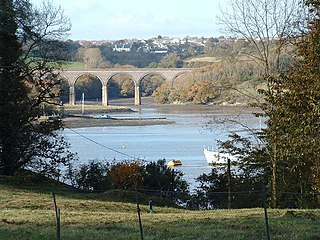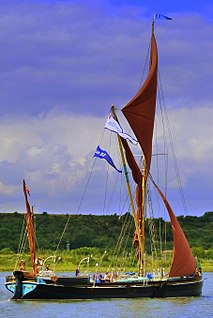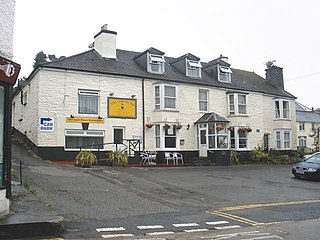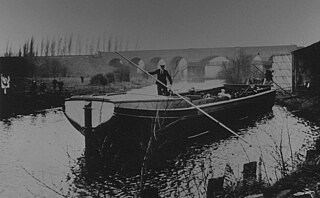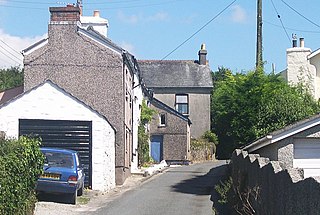This article needs additional citations for verification .(June 2019) (Learn how and when to remove this template message) |

A Tamar Barge is a masted sailing vessel, designed for carrying cargo around the River Tamar [1] and the South Coast of Cornwall.

The Tamar is a river in south west England, that forms most of the border between Devon and Cornwall. The area is a World Heritage Site due to its historic mining activities.

Cornwall is a county in South West England, bordered to the north and west by the Celtic Sea, to the south by the English Channel, and to the east by Devon, the River Tamar forming the border between them. Cornwall is the westernmost part of the South West Peninsula of the island of Great Britain. The southwesternmost point is Land's End and the southernmost Lizard Point. Cornwall has a population of 563,600 and an area of 3,563 km2 (1,376 sq mi). It is administered by Cornwall Council, apart from the Isles of Scilly, which are administered separately. The county town is Truro, Cornwall's only city.
Contents
The Tamar Barge can be single and double masted vessels. It can carry up to 32 tonnes. Tamar Barges were manufactured in the 19th Century in the Tamar Valley by boatbuilders such as James Goss of Calstock and Frederick Hawke of Stonehouse, Plymouth.

Calstock is a civil parish and a large village in south east Cornwall, England, United Kingdom, on the border with Devon. The village is situated on the River Tamar 6 miles (9.7 km) south west of Tavistock and 10 miles (16 km) north of Plymouth.
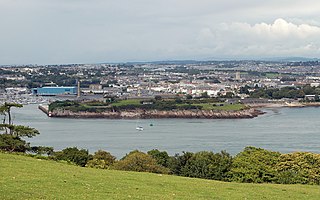
East Stonehouse was one of three towns that were amalgamated into modern-day Plymouth. West Stonehouse was a village that is within the current Mount Edgcumbe Country Park in Cornwall. It was destroyed by the French in 1350. The terminology used in this article refers to the settlement of East Stonehouse which is on the Devon side of the mouth of the Tamar estuary, and will be referred to as Stonehouse.

Plymouth is a port city situated on the south coast of Devon, England, approximately 37 miles (60 km) south-west of Exeter and 190 miles (310 km) west-south-west of London. Enclosing the city are the mouths of the river Plym and river Tamar, which are naturally incorporated into Plymouth Sound to form a boundary with Cornwall.
There are only two surviving Tamar Barges both have been almost completely restored. Currently one is open to visitors of Cotehele Quay [2] and the other is privately owned and moored at Cremyll.
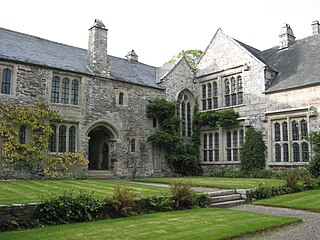
Cotehele is a medieval house with Tudor additions, situated in the parish of Calstock in the east of Cornwall, England. It is a rambling granite and slate-stone manor house on the banks of the River Tamar that has been little changed over five centuries.

Cremyll is a small coastal village in south-east Cornwall, England, United Kingdom. Cremyll is on the Rame Peninsula facing Plymouth Sound. It is situated close to Plymouth, about 9 miles by road or 1/2 a mile by boat from Plymouth. According to the Post Office the 2011 census population was included in the civil parish of Maker-with-Rame.








